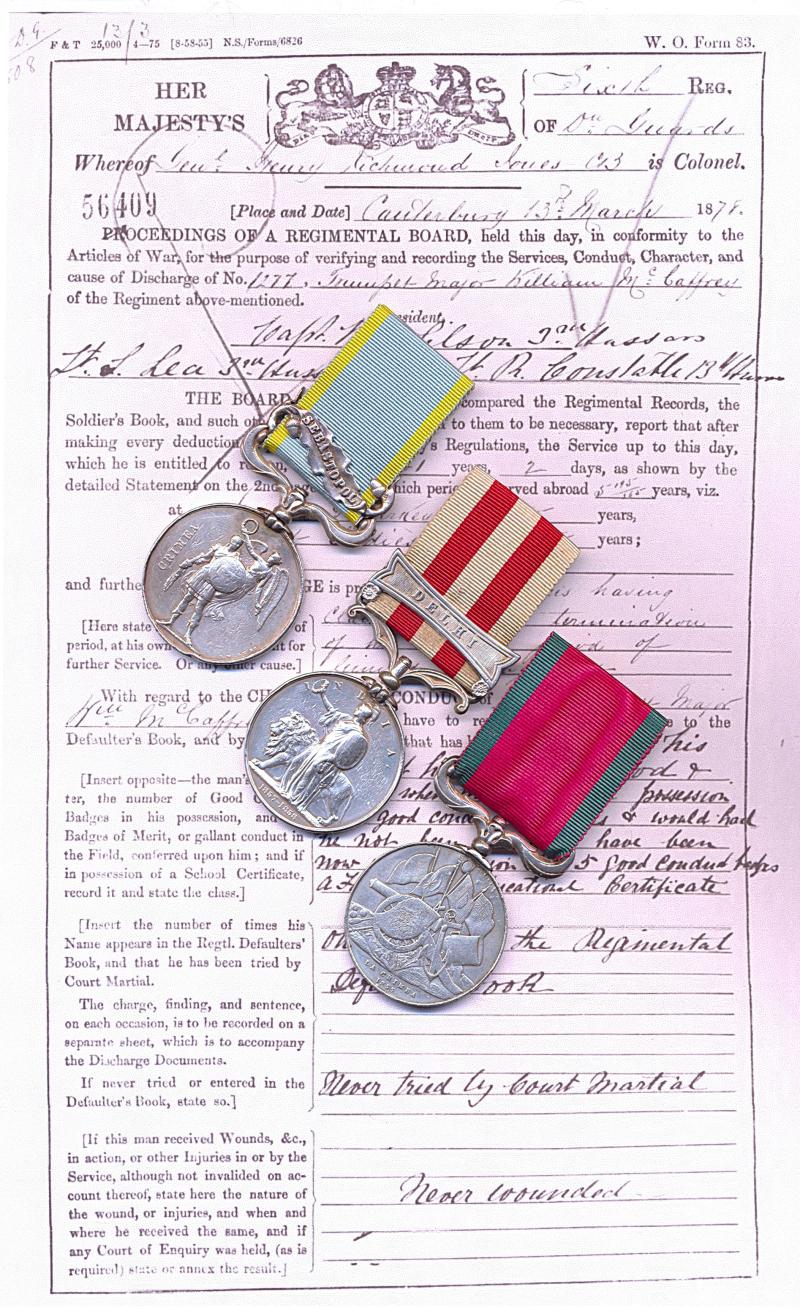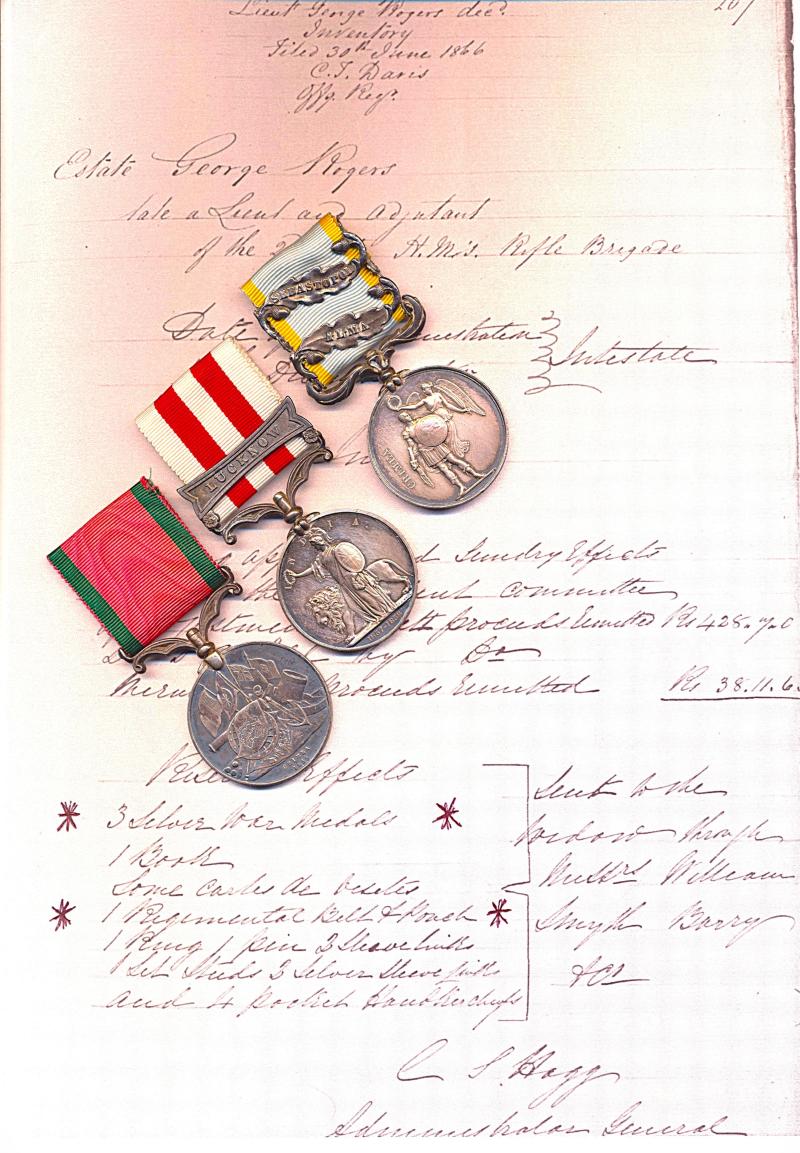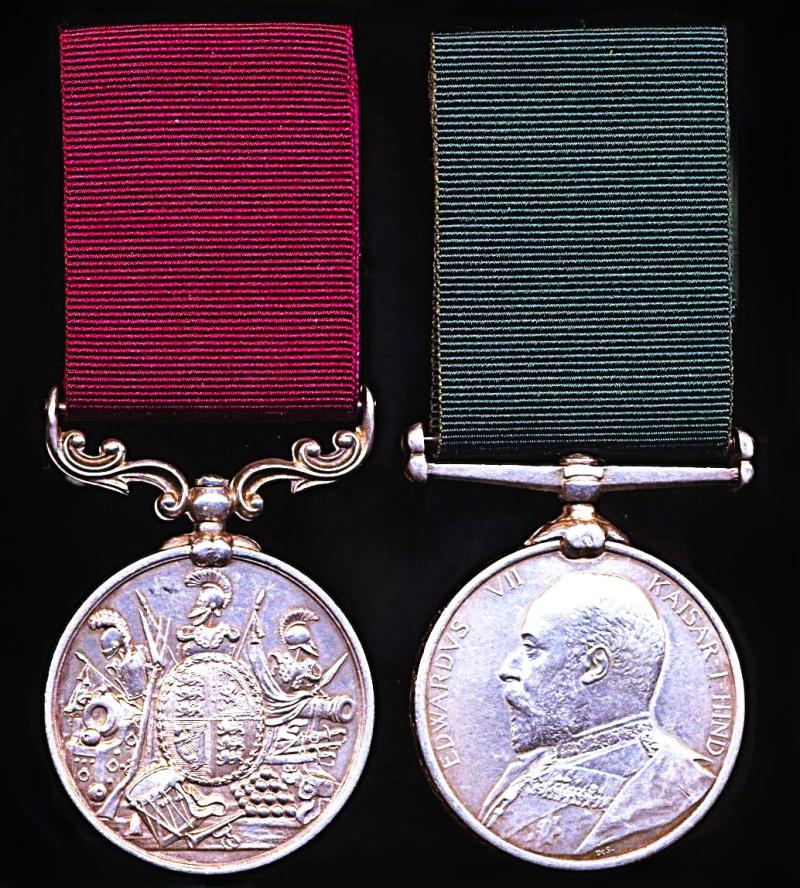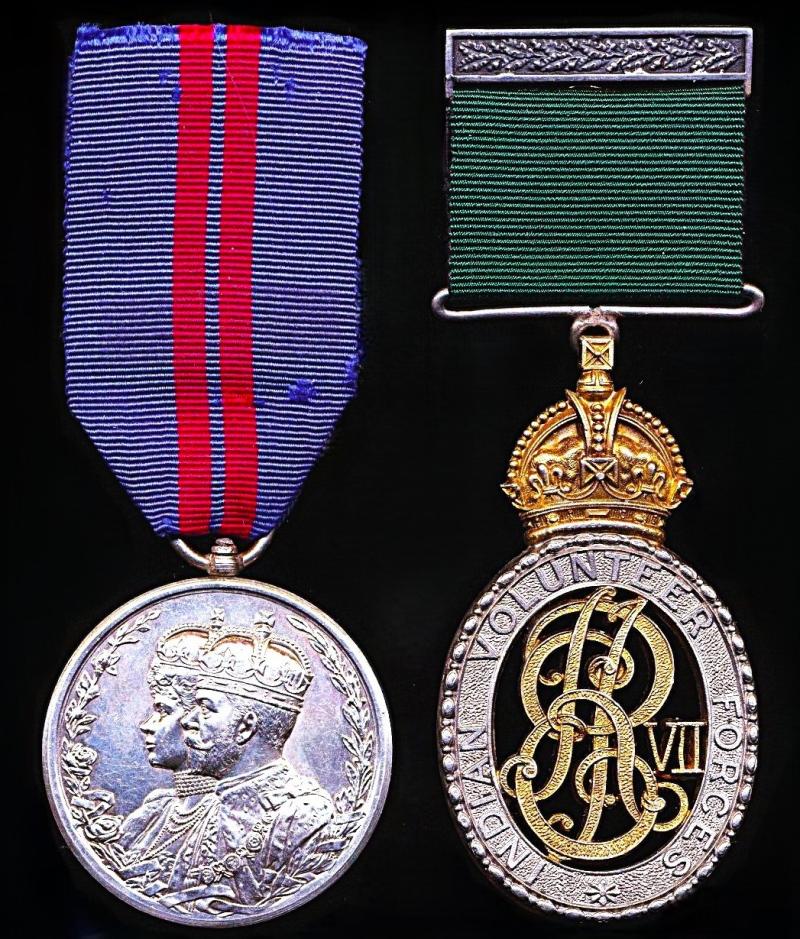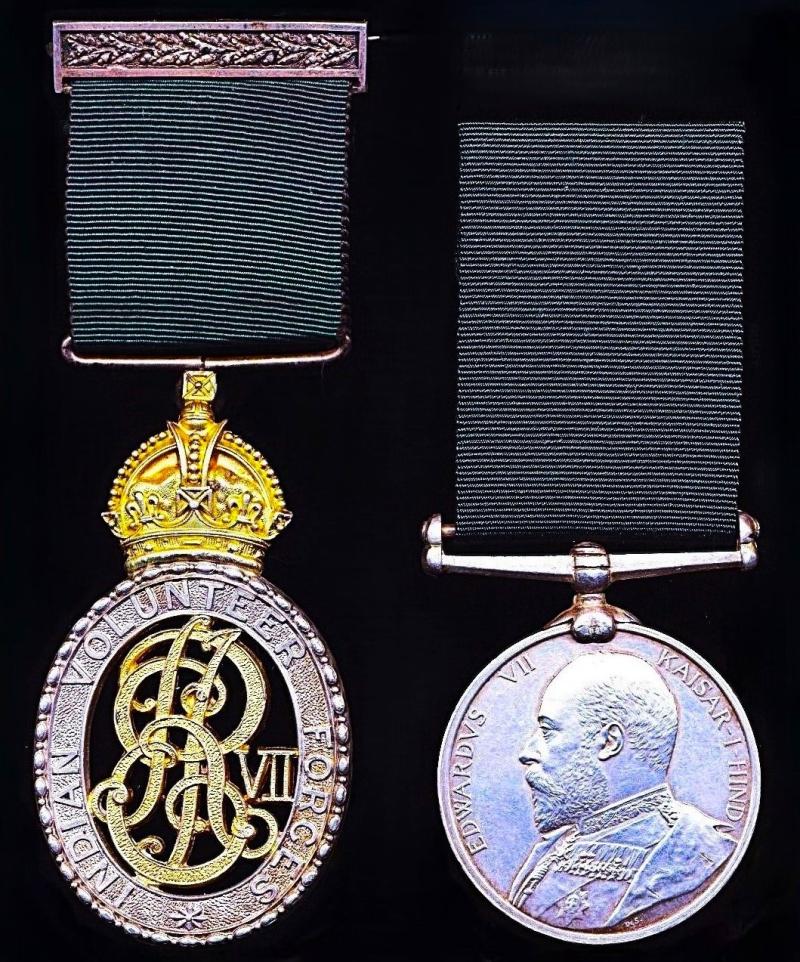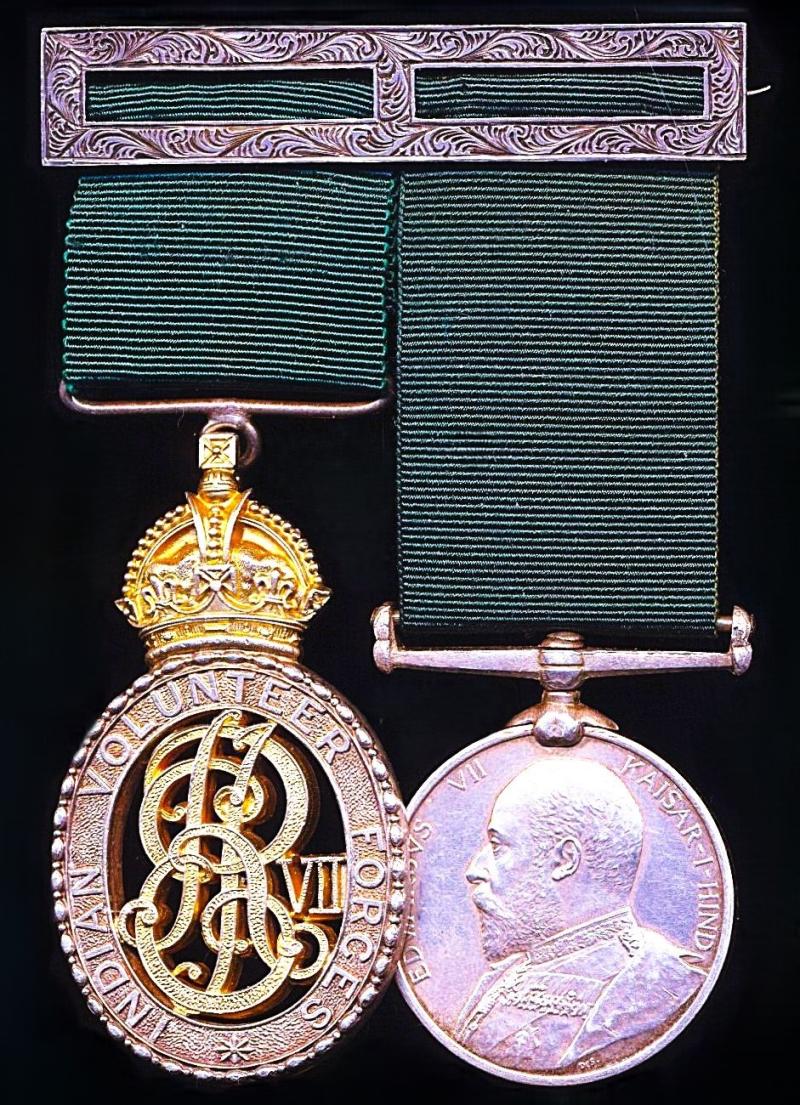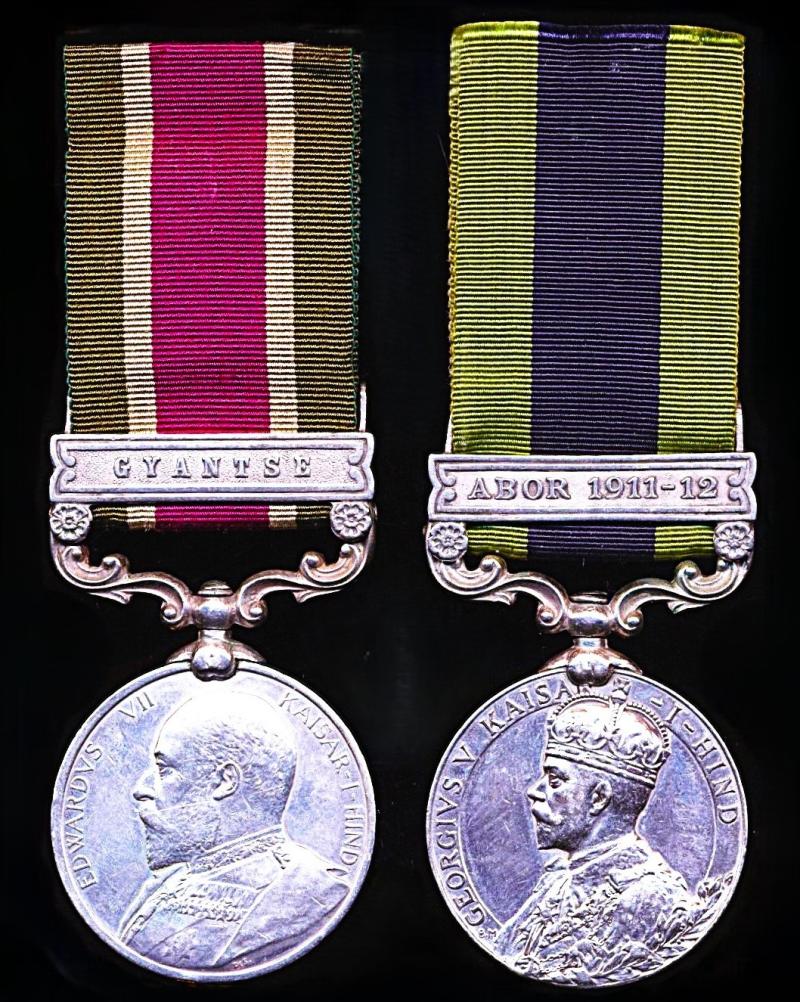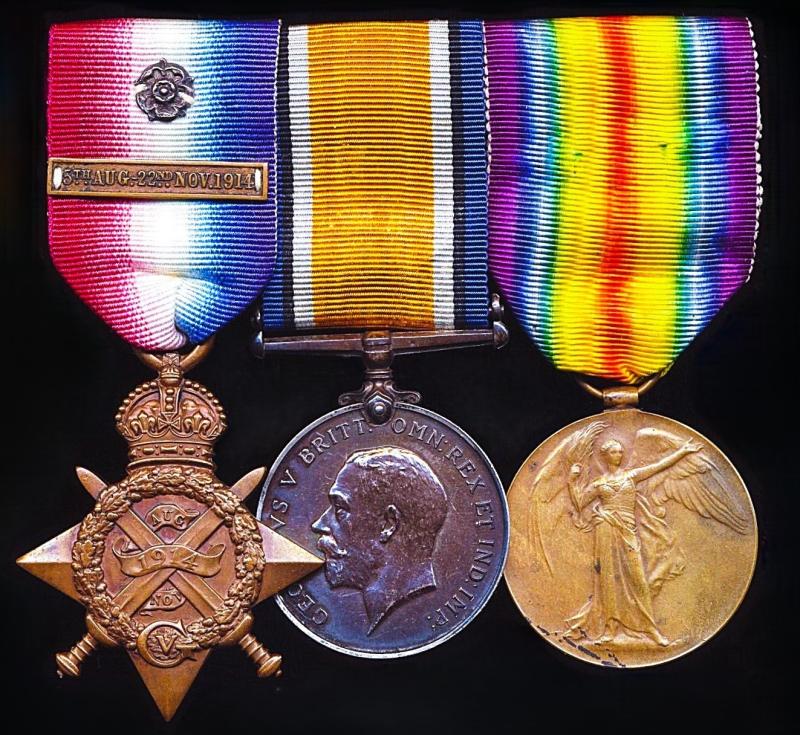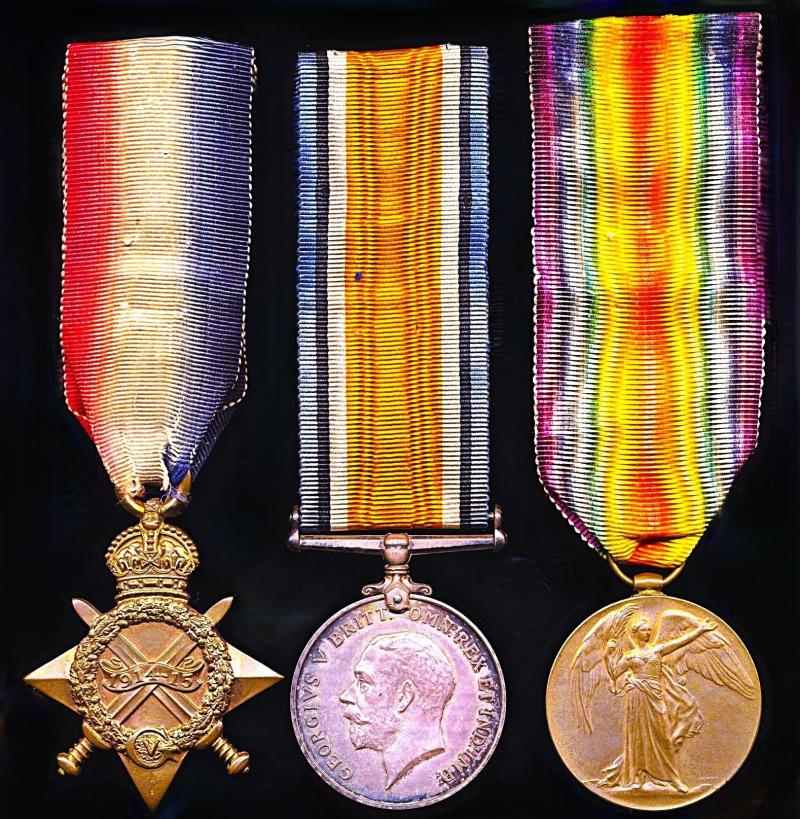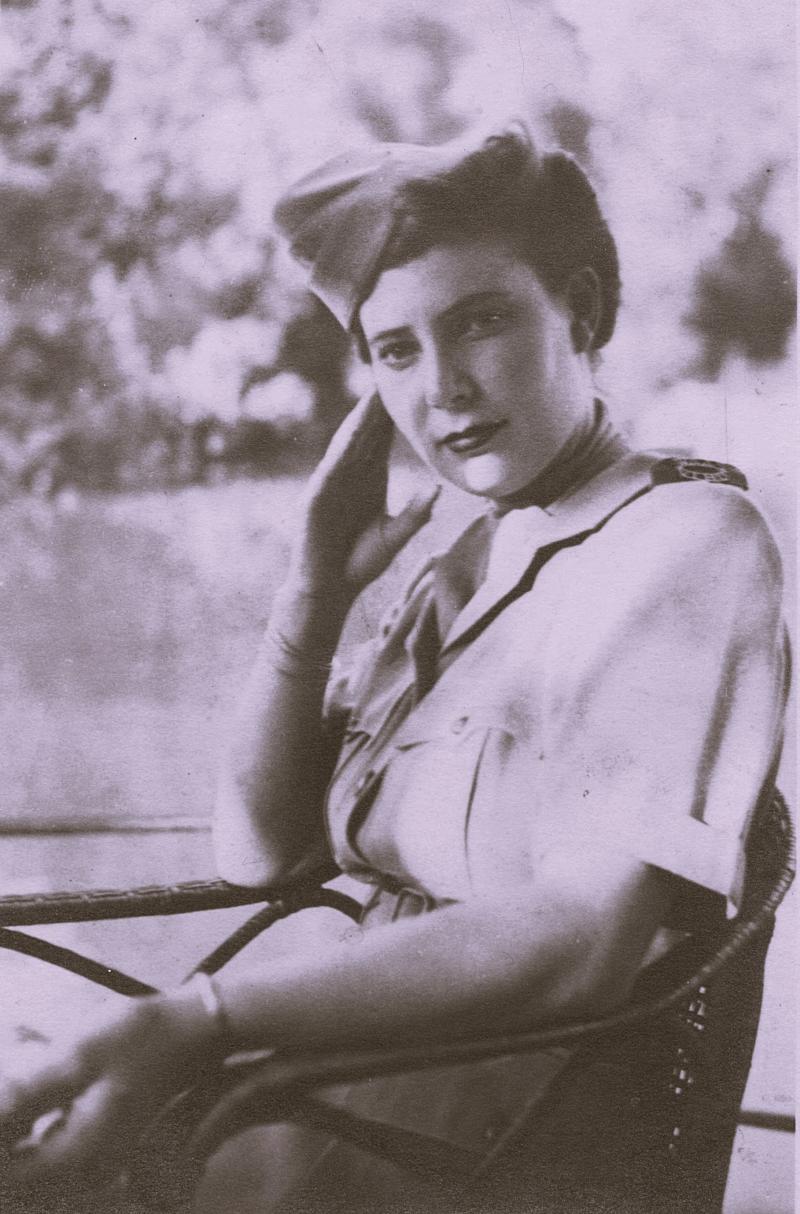An Intrepid American born Fighting Irish 'Teenage Trumpeter' who witnessed the outbreak of the Indian Mutiny at Meerut Cantonment & later dropped a Rebel with a well aimed pistol-shot: Trumpet-Major William McCaffrey, 6th Dragoon Guards (Carabiniers)
Dispatch of an Indian Rebel: The moment that Trumpeter McCaffrey shot dead a Rebel in the heat of battle, has been captured for posterity by the reminiscences of Private Rowland Dance, 6th Dragoon Guards (Carabiniers) whose life was saved by Trumpeter McCaffrey, per the published account in the Port Sunlight Monthly Journal (which hard-copy extracts are sold together with the medal group):
read more
1075.00 GBP
A 'Rifle Brigade' Officer & Veteran of the Crimea and Indian Mutiny who died at Mussoorie in the 'Himalayan Hills' in 1865: Lieutenant & Adjutant George Rogers, 2nd Battalion Rifle Brigade
- Crimea Medal 1854-56. Bars 'Alma' & 'Sebastopol' (Quartr. Mastr. G. Rogers 2nd Battn. Rifle Brigade)
- Indian Mutiny Medal 1857-59, With clasp 'Lucknow' (Qr. Mr. G. Rogers. 2nd Bn. Rifle Bde.)
- Turkey (Ottoman Empire): Crimea Medal 1855. British 'Union Flag' reverse issue
The British Crimea medal with contemporary engraved naming & the Turkish medal fitted with... read more
1150.00 GBP
An unusual pair of Long Service medals for service in Simla, the Summer-Capital, of British India: Captain Thomas George Sparkes, Army Service Corps, late Simla Volunteer Rifles, Office of the Adjutant General's Office in India, & Royal Horse Artillery
- Army LS&GC Medal. Victorian issue (Condr. F. G. Sparkes. Office of the A.G. in India)
- Volunteer Long Service Medal (India & Colonies). EDVII issue (Volr. F. G. Sparkes. Simla Volr. Rifles.)
Medals verification: Medal rolls for the award of the Army LS&GC Medal awarded in India are not accessible on-line, however the recipients obituary refers to the recipient being awa... read more
285.00 GBP
An India born 'Son of Empire' & Railwayman's Indian Volunteers Long Service and Delhi Durbar Medal Pair: Captain Samuel Witherow Jewell, V.D., East Indian Railway Volunteer Rifles
- Delhi Durbar Medal 1911. Silver issue (S. W. Jewell E.I.R.)
- Indian Volunteer Forces Officers Decoration. EDVII. With top bar (Captn S. W. Jewell E. I. Ry Volr Rifles)
The integral top brooch bar, typically adapted for mounting and now sans pin & clasp fittings. The Delhi Durbar medal contemporary script engraved and awarded to the recipient from the 'Civil Allocation'<... read more
825.00 GBP
A Scottish Railyman's Indian Volunteer Long Service medal pair: Honorary Captain James Miller Mushet, Bombay Baroda & Central India Railway Volunteer Rifle Corps
The pair comprising:
a). Indian Volunteer Forces Officers Decoration. EDVII issue With integral top brooch bar (Hony. Captain & Qr. Mr. J. M. Mushet, Bo. B. & C.I. Ry. Volr. Rifles)
b). Volunteer Force Long Service Medal (India & the Colonies), EDVII issue (Lt. & Qr. Mr. J. M. Mushet, 2d Bo. B. & C.I. Ry. Vols.)
The IVD with English silver hallmarks... read more
875.00 GBP
A Scottish 'Merchant' & Officer of the Indian Volunteers Long Service Medal Pair: Lieutenant- Colonel John Stewart Couper, V.D., late Commanding-Officer, Sind Volunteer Rifles
- Indian Volunteer Forces Officers Decoration. EDVII issue (Major J. S. Cooper, Sind Volr. Rifles)
- Volunteer Force Long Service Medal (India). EDVII issue (Major J. S. Couper, Sind Volr. Rifles
The surname n the IVD only has been engraved as 'Cooper' (sic), when the correct surname was Couper. The medal being as issued and never corrected
The IVD with Engl... read more
875.00 GBP
A 'Mountains & Jungles'; Indian campaign medal pair: Havildar Jhanda Singh, 32nd Sikh Pioneers, Indian Army
- Tibet Medal 03-04. Silver & clasp ‘Gyantse’ (3263 Lce. Nk. Jhanda Singh 32nd. Sikh Pioneers.)
- IGS 08-35. GV 1st type silver ‘Abor 1911-12' (3263 Havdr. Jhanda Singh 32nd. Sikh Pioneers.)
The recipient was an Indian soldier of the Sikh faith holding the rank of 'Havildar' (Sergeant) while serving with the 32nd Sikh Pioneers, an infantry regiment of the British Indian... read more
Scot's Wha Hae & 'True-Grit' Personified' - a Mons 1914 Star Trio - to a 'Bayonet Fighter' of the Great War, who was wounded on multiple occasions: Private John Scally, 1st Battalion Royal Highlanders (Black Watch)
- 1914 Star. With contemporary dated clasp & silver rosette emblem (8078 Pte T. Scally. R.Highrs.)
- British War Medal. Silver issue (8078 Pte T. Scally. R.Highrs.)
- Interallied Victory Medal (8078 Pte T. Scally. R.Highrs.)
Multiple Wounds-in-Action: Thomas Scally is confirmed having been 'Wounded-in-Action' in France & Flanders on at least 4 x different occasions... read more
A 'Chilbolton' former Hussar & later Black Watch 'Jock' Killed-in-Action medal group of 3: Private William Fisher, 1st Battalion Royal Highlanders (Black Watch)
- 1914-15 Star (8438. Pte. W. Fisher, R. Highrs.)
- British War Medal. Silver issue (8438. Pte. W. Fisher. R. Highrs.)
- Interallied Victory Medal (8438. Pte. W. Fisher. R. Highrs.)
Killed-in-Action: Private William Fisher is confirmed having been 'Killed-in-Action' in France, 13 October 1915
Sadly William Fisher's body was never recovered from the fi... read more
185.00 GBP
A well illustrated South African Woman's Second World War 'Home Front' and North Africa campaign medal group of 5: Dorothy Novello Ogden (formerly Mrs Robinson) Women’s Auxiliary Army Services, South African Army
- The 1939-45 Star. No clasp (W223401 D. N. Ogden)
- The Africa Star. No clasp (W223401 D. N. Ogden)
- War Medal (W223401 D. N. Ogden)
- Africa Service Medal (W223401 D. N. Ogden)
- South African Medal for War Services, 1939-45. Un-named as issued
The first four medals officially impressed, the last un-named as issued
Qualification and e... read more




